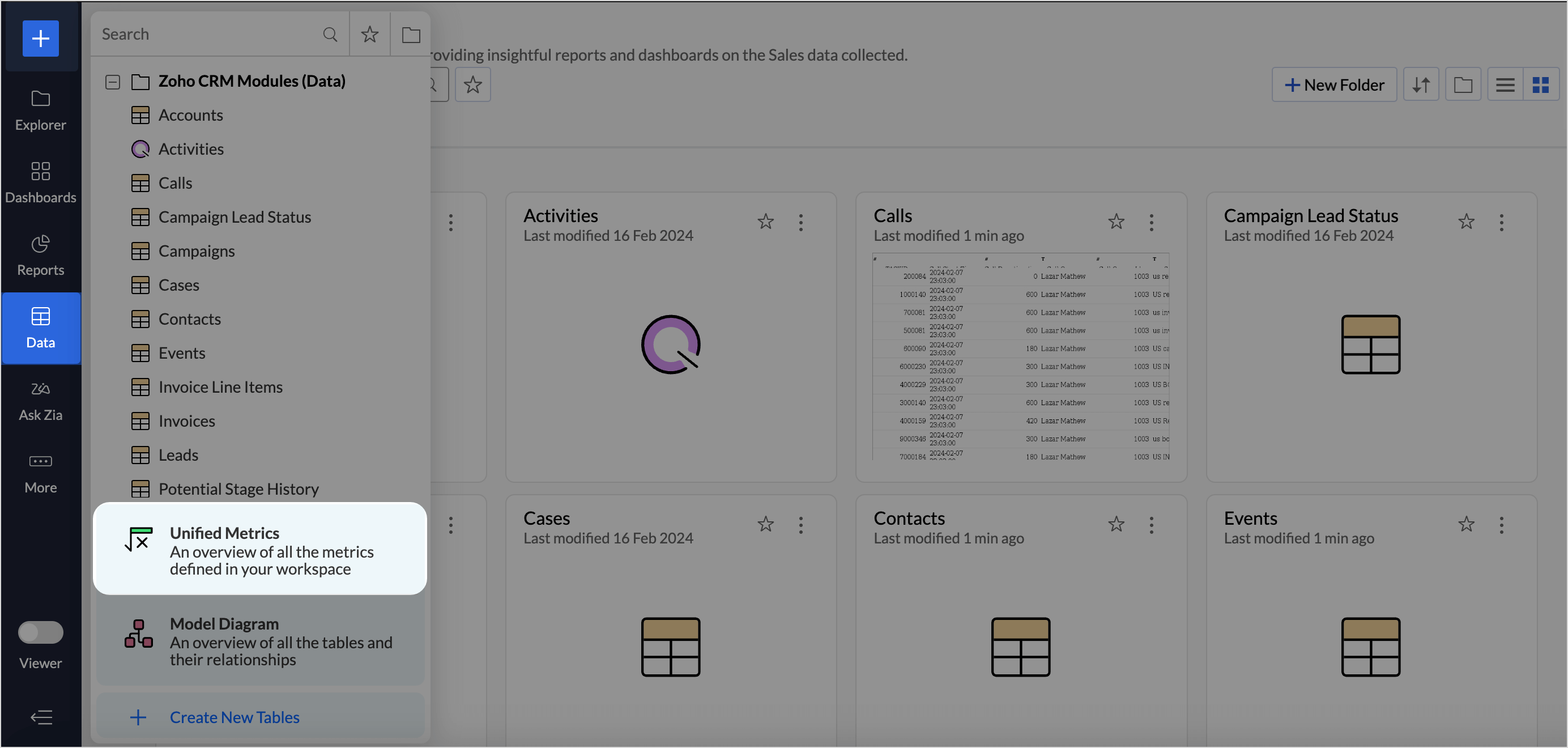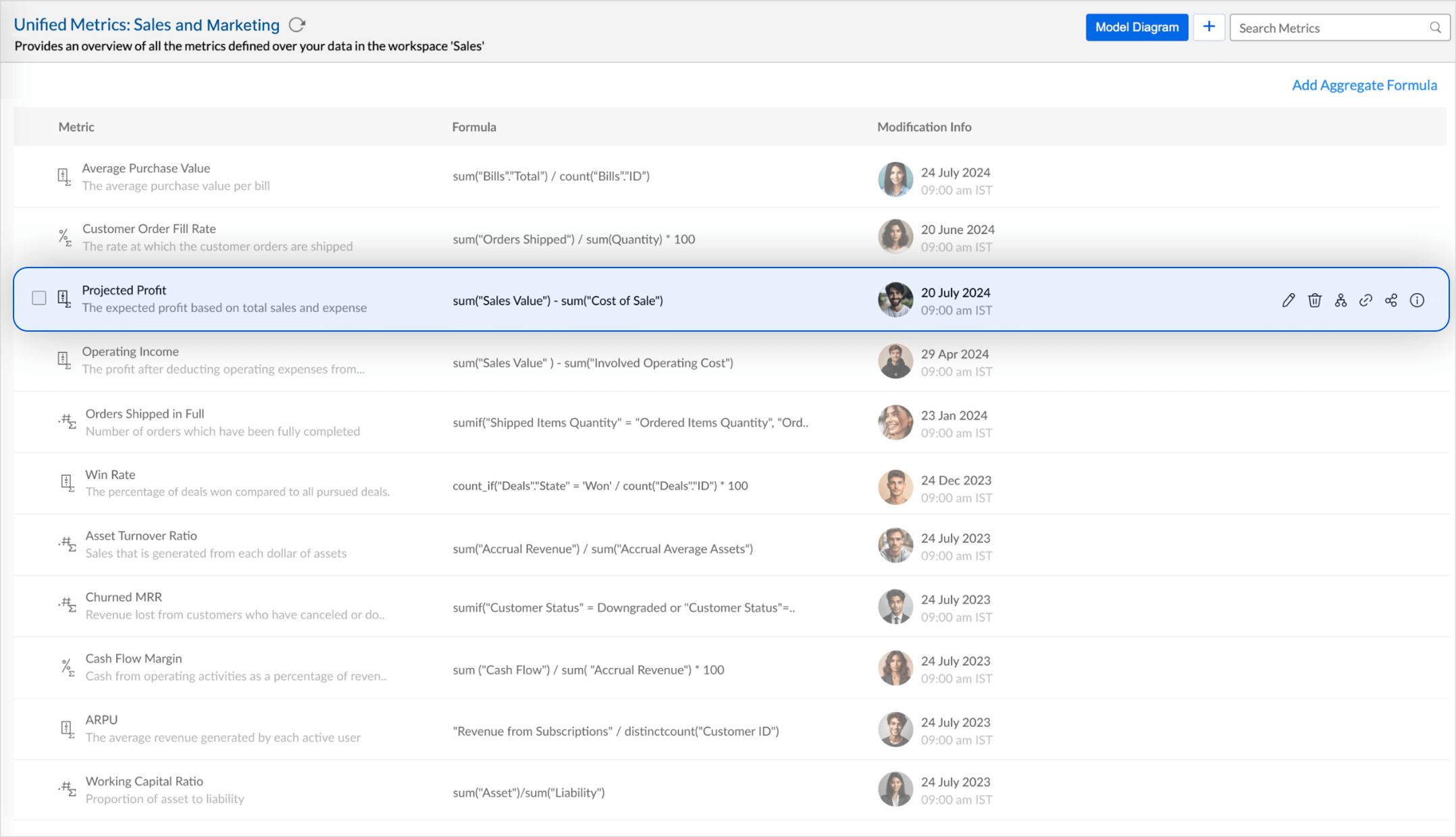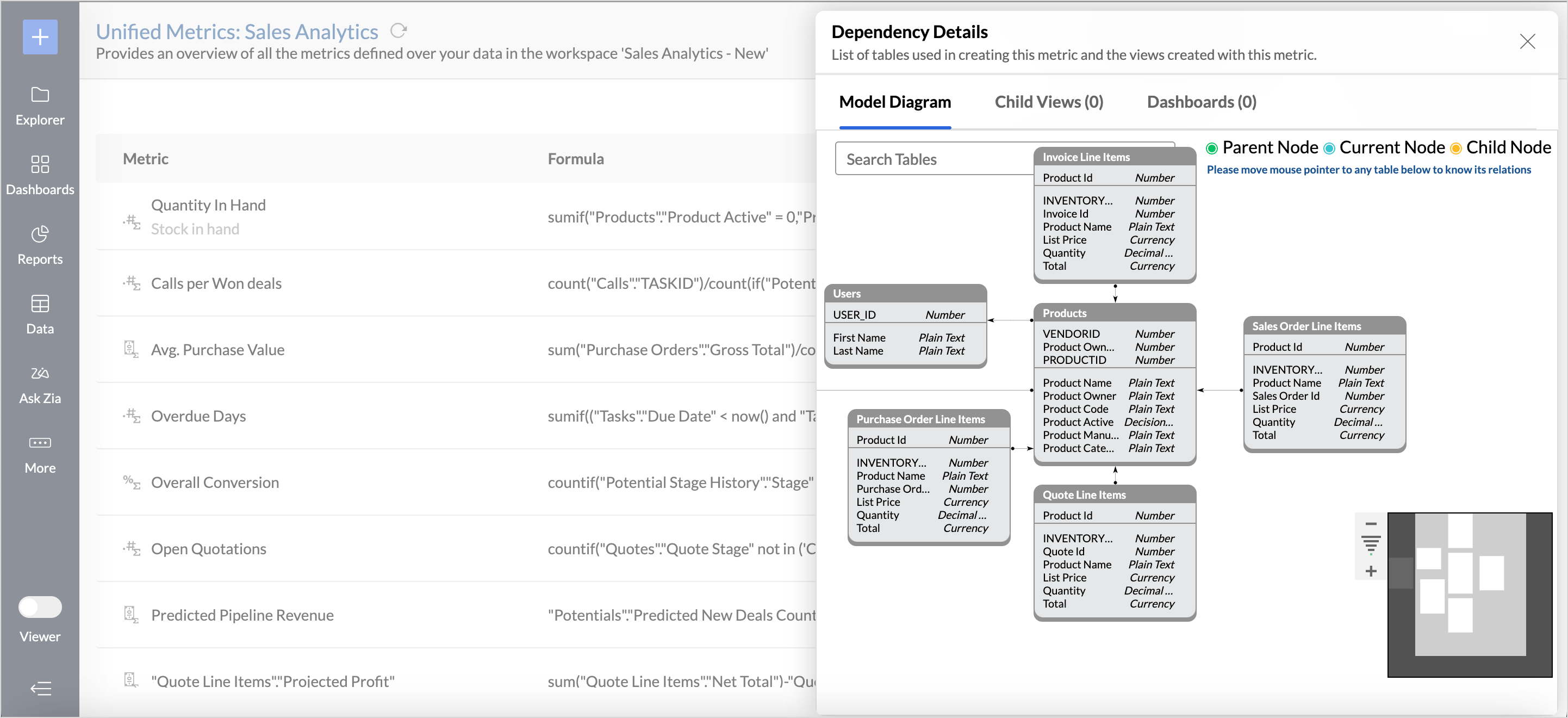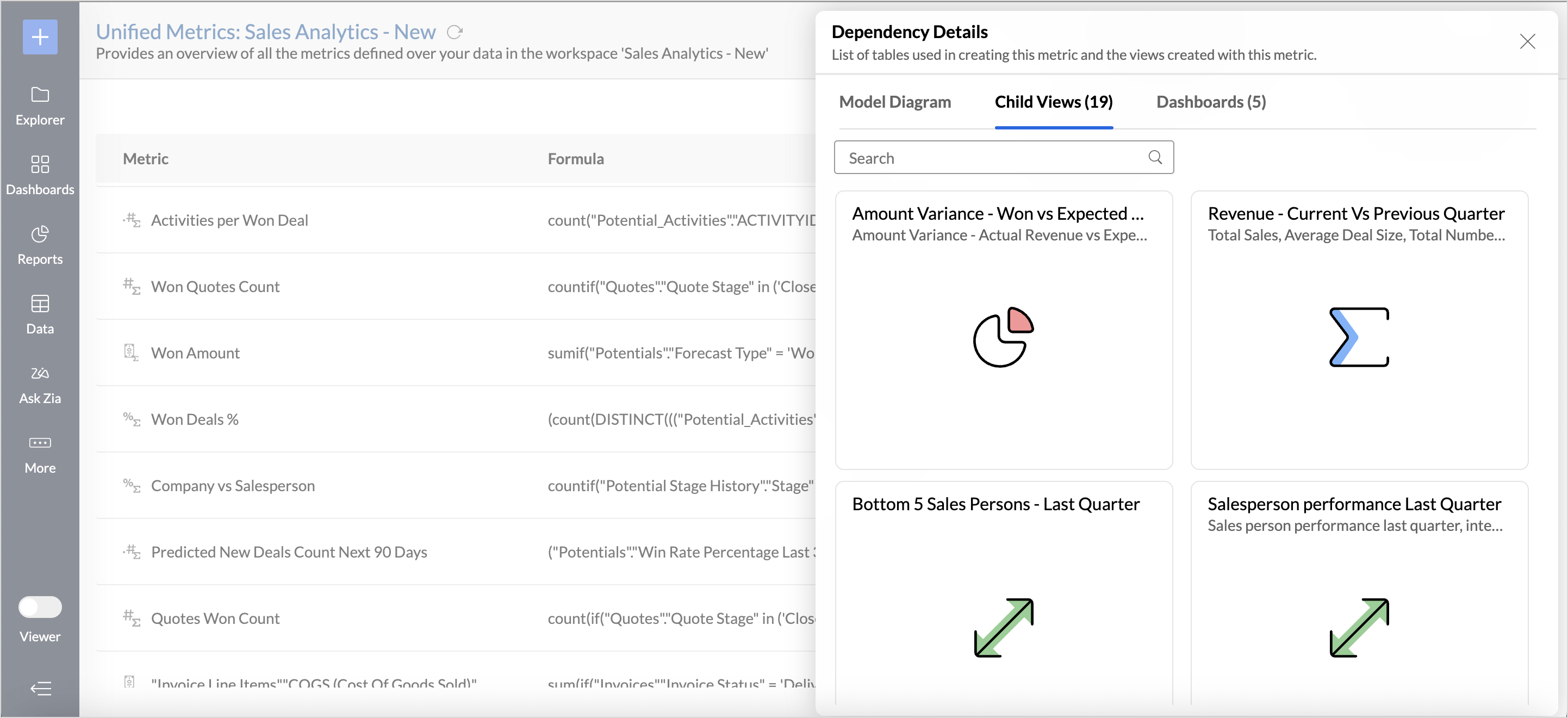Unified Metrics
A unified metrics in Zoho Analytics is a centralized framework that standardizes and defines how a particular metric or key performance indicator should be computed across the workspace.Having a unified metrics ensures consistency, accuracy, and reliability of the data analysis. This Metrics layer resides between the raw data and analysis layer, creating a clear differentiation between data processing and the data visualization layer.
On this Page
- Why do you need Unified Metrics
- Key Benefits of Unified Metrics
- Accessing the Unified Metrics in Zoho Analytics
Why do you need unified metrics?
Businesses conduct analysis on huge volumes of data stored in multiple different sources across the teams, and metrics or KPIs are the prime factors for assessing the performance and growth of the business. In such a scenario, each department may use different computation logic, and this leads to varied interpretations of the same data. This is where a unified metrics layer comes into play and helps in the unique identification of metrics across workspaces providing a smoother and streamlined analytics experience.
Key Benefits of Unified Metrics
Single Source of Truth: Implementing a metric helps align all the analytical efforts, ensuring that everyone in the organization understands and uses the same definition of the metrics. Unified metrics enables the unique identification of metrics, thereby promoting transparency and uniformity.
Increased Efficiency: This view simplifies the process of maintaining and monitoring metrics, as all changes can be done from a single place without any discrepancies. It can seamlessly accommodate new business rule sets into the existing framework and can be used for training ML models, creating custom visuals, and integrating with other third- party applications.
Data Integrity: Having a centralized framework for managing metrics promotes data integrity and thereby, improves the data quality as well
Accessing the Unified Metrics in Zoho Analytics
Zoho Analytics catalogs all the Aggregate Formulas defined in the workspace. This includes calculation defined on all the data sources configured in that workspace. Users with read-only access can view the formulas, while those with administrator privileges and custom permissions can edit, modify, and change them. Dependency details, such as tables used for creating the metric and the reports generated over it, will also be given.
To view the unified metrics tab,
- Click Data on the side navigation panel.
- Scroll to the bottom of the pane and choose Unified Metrics.

- All the Aggregate Formulas defined in that workspace will be listed along with meta information like descriptions or definitions for Admins and only the descriptions for Shared Users.

- Click the Edit icon to modify the formula, and the Delete icon to remove the formula.
- Click the Info icon to get the details about the admin who created the metric and the time when it was created in Zoho Analytics.
- Click the Dependencies icon to:
- View the Model diagram of the tables associated with the metric.

- View the Child views and Dashboards created using the metric.

- View the Model diagram of the tables associated with the metric.